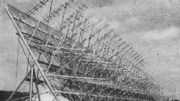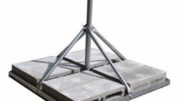As we all know, it’s necessary to scan for channels after setting up an antenna. That reads all the stations that the TV can receive and puts them in order into a menu you can access. But is there ever a reason to do it again?
Actually, yes.
First let’s talk about most televisions When you scan for channels, you’re doing more than just reading frequencies. The PSIP system used for US television broadcasting contains information that lets your TV show that channel where you’re expecting to see it. When TV broadcasting moved from analog to digital in the mid-2000s a lot of stations changed broadcast frequencies. The programs that were once on channel 4 (for example) might now be found on channel 42. In order to make the whole transition friendlier, your TV reads PSIP data from the broadcast and puts channel 42 (again I’m just making an example here) on channel 4 so it’s easy for you to find.
For about a decade, channels didn’t move around a lot. The only reason to rescan was if you found that a local broadcaster had added a subchannel. Subchannels are the darlings of over-the-air enthusiasts; a single broadcast channel could contain three, six, or even ten distinct video streams, each shown on your TV as a separate tunable channel. These come and go with some regularity so you might consider doing a new channel scan every few months just to see what’s out there. You may find some new channels you like.
Personally I enjoy retro channels like “Buzzr”, a network found only on a subchannel that carries old 1970s (and earlier) game shows. You won’t find most subchannels on cable or satellite systems. It takes a certain amount of technology to add a channel, and most subchannels don’t have the ratings to justify it. Some subchannels will also have live streams, though.
If you have DIRECTV Satellite
If you have DIRECTV satellite, things are even more complex. For most of its existence, DIRECTV supported local channels through tuners built into the receivers or through addins like the AM21 antenna module. Supplies of the AM21 started to dry up a few years ago. and for most of the last two years the official story with DIRECTV has been, “no antenna support.” However we’re starting to hear rumors of new hardware… if they come true you’ll get the real story here at The Solid Signal Blog.
However, DIRECTV’s system has always been a little flawed and there’s no reason to think that’s going to change. Instead of truly scanning for channels, DIRECTV boxes rely on a database to guess what channel you should be able to get. It’s based on your ZIP code.
The big problem with DIRECTV’s system is that there’s a limit to how many channels it can store. The rumor is that only 50 channels can be stored in the table, including all subchannels. Unfortunately you can’t pick which 50 either. This isn’t a problem for many markets. However, in the crowded large markets like New York and Los Angeles, many channels can be left out.
The upcoming repack
About 18 months ago the FCC finished up a “reverse auction.” In this historic event, over 1,000 stations agreed to move out of their current slots so channels 38-51 could be reallocated for cellular data. There’s a complex, multi-phase process in play. That process dictates when the deadline is for a particular station to move to its new transmitter. However, the key word there is deadline. A station is free to file the papers at any time to move its frequency.
You would think that if a station was moving they would let you know. They would probably run a crawl at the bottom of the screen, right? They’d tell people when they have to scan for channels. But then again sometimes that doesn’t happen. You can plan for something like this but sometimes it just takes you by surprise.
When to scan for channels
Personally I make a habit of rescanning every time there’s a change of season. Every three months is about right for me. There are rarely changes, but every so often I get a pleasant surprise.
For people who aren’t quite so devoted to TV viewing, there’s another option. If you don’t want to get on a schedule, just wait until your favorite station drops off. Then, do a rescan. On most TVs it takes under 20 minutes. It should be the first thing you try if you unexpectedly lose all reception on just one channel.
Oh, and by the way, just because they keep the lights on here at this blog, if you’re looking for the best antennas and accessories, I’d sure appreciate it if you’d check out the great selection at Solid Signal.





